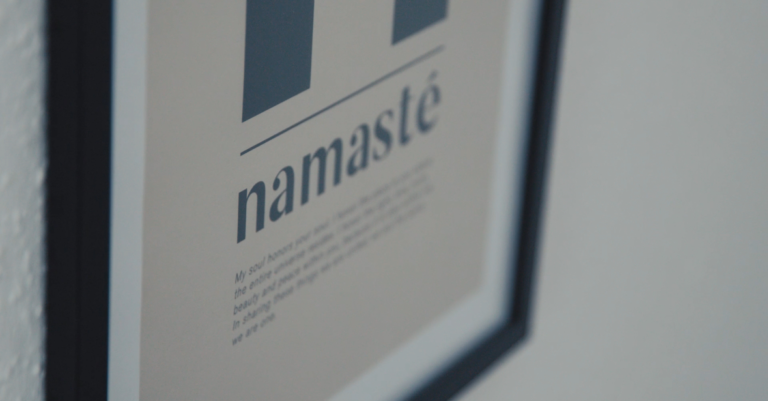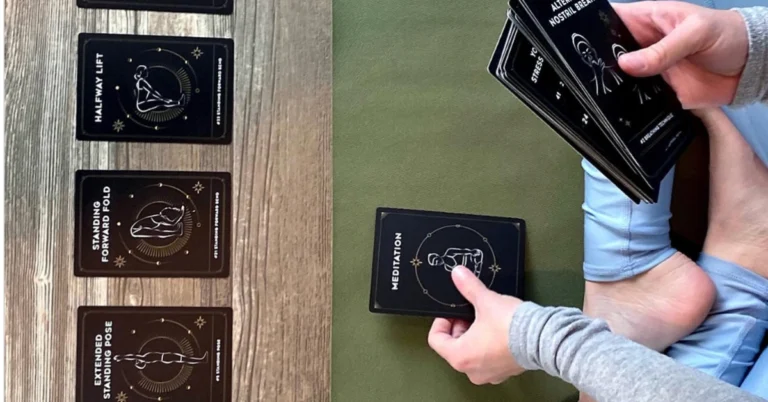Always believing in god I was looking for a way to involve prayers into my every day life. Luckily, I came across guided mediation prayers. You will now find out what is behind a guided meditation prayer.
Guided meditation prayer is a practice that combines the power of prayer with the calming effects of meditation. It is a form of meditation that is guided by a trained practitioner or a recording to help you focus your thoughts and deepen your connection with God. Guided meditation prayer can help you reduce stress and anxiety, increase your spiritual awareness, and improve your overall well-being.
During guided meditation prayer, the practitioner or recording will lead you through a series of visualizations and affirmations that are designed to help you connect with God and receive His guidance and wisdom. These visualizations may include imagining yourself in a peaceful setting, such as a beach or a mountain, and feeling the love and presence of God around you. The affirmations may include repeating positive statements about yourself and your connection with God, such as “I am worthy of God’s love and guidance” or “I trust in God’s plan for my life.”
Pros ✅
- The deck contains 100 cards with a wide range of mindfulness exercises
- The cards are organized into 7 categories with day and night activities
- The graphics on the cards are eye-catching
Cons 🚫
- Some users may find the design of the cards too busy and overwhelming
- The cards are not as durable as other decks on the market
Understanding Guided Meditation Prayer
Guided meditation prayer is a form of prayer that involves using a guided meditation to help focus the mind and connect with the divine. In this section, I will discuss the origins and principles of guided meditation prayer, as well as its benefits and importance.
Origins and Principles of Guided Meditation Prayer
Guided meditation prayer has its roots in the ancient practice of meditation, which has been used for thousands of years to promote physical, mental, and spiritual well-being. In guided meditation prayer, a leader or guide provides instructions and prompts to help the practitioner focus their attention and connect with the divine.
The principles of guided meditation prayer are based on the idea that by quieting the mind and focusing on the present moment, we can connect with the divine and receive guidance, inspiration, and healing. This practice can be used to deepen our spiritual connection, cultivate inner peace, and develop a greater sense of compassion and empathy for others.
Benefits and Importance of Guided Meditation Prayer

Guided meditation prayer has many benefits for the practitioner. Some of the most important benefits include:
- Stress reduction: Guided meditation prayer can help reduce stress and anxiety by promoting relaxation and calmness.
- Improved focus: By focusing the mind on the present moment, guided meditation prayer can help improve concentration and mental clarity.
- Spiritual growth: Guided meditation prayer can help deepen our spiritual connection and promote personal growth and transformation.
- Greater sense of well-being: By promoting relaxation and reducing stress, guided meditation prayer can help improve overall physical and mental health.
Guided meditation prayer is an important practice for anyone seeking to deepen their spiritual connection and promote personal growth and well-being. Whether you are new to meditation or have been practicing for years, guided meditation prayer can be a powerful tool for cultivating inner peace, promoting spiritual growth, and connecting with the divine.
Preparing for Guided Meditation Prayer
As I prepare for guided meditation prayer, I find it helpful to focus on two main areas: setting the environment and mental preparation. These two aspects can help me create a conducive atmosphere for prayer and allow me to be more receptive to the guidance offered during the meditation.
Setting the Environment
To start, I make sure that I am in a quiet and comfortable space, free from distractions. I prefer to dim the lights or light a candle to create a calming ambiance. Additionally, I like to use headphones to block out any external noise and to help me focus on the guided meditation.
Another important aspect of setting the environment is posture. I like to sit in a comfortable chair or on a cushion on the floor with my back straight and my feet firmly planted on the ground. This helps me to maintain focus and avoid distractions during the meditation.
Mental Preparation
Before beginning the guided meditation, I take a few moments to mentally prepare myself. This involves letting go of any thoughts or worries that may be occupying my mind and focusing on the present moment. I find it helpful to take a few deep breaths and to repeat a calming mantra, such as “peace be with me” or “I am open to guidance.”
During the meditation, I try to remain open and receptive to the guidance offered. I remind myself that there is no right or wrong way to experience the meditation and that any thoughts or feelings that arise are valid. I also try to remain patient and not become frustrated if my mind wanders or if I find it difficult to concentrate.
In conclusion, preparing for guided meditation prayer involves setting the environment and mentally preparing oneself. By creating a calming atmosphere and remaining open and receptive, one can experience the full benefits of guided meditation prayer.
Steps in Guided Meditation Prayer

As I begin my guided meditation prayer session, I follow a few simple steps to help me focus my attention, invoke the presence of a higher power, and engage in prayerful contemplation. These steps include:
Invoking Presence
Before I begin my guided meditation prayer, I take a moment to invoke the presence of a higher power. This might involve reciting a prayer or mantra, lighting a candle or incense, or simply taking a few deep breaths and visualizing the presence of a divine being. By invoking this presence, I create a sense of sacred space and prepare myself to engage in prayerful contemplation.
Focusing Attention
Once I have invoked the presence of a higher power, I focus my attention on my breath or a specific object, such as a candle or a religious icon. This helps me to quiet my mind and become more present in the moment. As thoughts or distractions arise, I acknowledge them without judgment and return my focus to my breath or object of attention.
Prayerful Contemplation
With my mind more focused and present, I engage in prayerful contemplation. This might involve reciting a prayer or mantra, reflecting on a specific religious text or teaching, or simply expressing gratitude or asking for guidance. As I engage in prayerful contemplation, I try to remain open and receptive to any insights or guidance that may arise.
Ending the Session
As my guided meditation prayer session comes to a close, I take a few moments to reflect on my experience and offer any closing prayers or intentions. I might also take a few deep breaths and visualize the presence of a higher power, expressing gratitude for the opportunity to engage in this practice. Finally, I slowly open my eyes and take a few moments to transition back into my daily life.
By following these steps, I am able to engage in a guided meditation prayer practice that helps me to connect with a higher power, quiet my mind, and engage in prayerful contemplation.
Common Challenges and Solutions

As with any form of meditation, guided meditation prayer can present some challenges. However, with practice and patience, these challenges can be overcome. In this section, I will discuss two common challenges that practitioners may face during guided meditation prayer and provide solutions to help overcome them.
Distractions and How to Overcome Them
One of the most common challenges during guided meditation prayer is dealing with distractions. It is common to experience wandering thoughts or external noises that can take your focus away from the meditation. Here are some solutions to help you overcome distractions during guided meditation prayer:
- Acknowledge the distraction: Instead of trying to push the distraction away, acknowledge it and let it pass. By doing so, you can prevent the distraction from becoming a source of frustration.
- Use breathing techniques: Focusing on your breath can help you stay present and centered during the meditation. When you notice a distraction, take a deep breath and return your focus to your breath.
- Choose a quiet space: Find a quiet and peaceful space to practice your guided meditation prayer. This can help minimize external distractions and allow you to focus on your practice.
Dealing with Emotional Responses
Guided meditation prayer can sometimes bring up emotional responses, such as anxiety or sadness. Here are some solutions to help you deal with emotional responses during guided meditation prayer:
- Accept your emotions: Instead of trying to push away your emotions, acknowledge and accept them. This can help you process and release them.
- Focus on the present moment: When you notice an emotional response, focus on your breath or the present moment. This can help you stay grounded and centered.
- Practice self-compassion: Be kind and compassionate towards yourself during the guided meditation prayer. Remember that it is normal to experience emotional responses during meditation, and it is a part of the process.
By using these solutions, you can overcome distractions and emotional responses during guided meditation prayer. Remember that meditation is a practice, and with time and patience, you can develop a deeper understanding and connection with your inner self.
Advancing in Guided Meditation Prayer

As I continue to practice guided meditation prayer, I have found that there are ways to deepen my practice and incorporate it into my daily life. In this section, I will share some tips on how to advance in guided meditation prayer.
Deepening the Practice
To deepen my guided meditation prayer practice, I have found it helpful to focus on my breathing. Taking deep breaths and focusing on the sensation of the air moving in and out of my body helps me to clear my mind and connect with God. I also find it helpful to visualize a peaceful scene, such as a beautiful garden or a calm ocean, to help me relax and focus.
Another way to deepen my practice is to use guided meditations that focus on specific aspects of prayer, such as gratitude or forgiveness. These meditations can help me to explore these topics in a deeper and more meaningful way, and to connect with God on a more personal level.
Incorporating guided meditation prayer into Daily Life

Incorporating guided meditation prayer into my daily life has been a great way to stay connected with God and to find peace and calm in the midst of a busy day. One way to do this is to set aside a specific time each day for meditation, such as first thing in the morning or before bed. This can help to make it a regular part of my routine and to ensure that I am making time for prayer in my busy schedule.
I also find it helpful to use guided meditations throughout the day when I need a moment of calm or to refocus my thoughts. For example, if I am feeling stressed or anxious, I might take a few minutes to listen to a guided meditation on peace or relaxation. This can help me to feel more centered and to approach my tasks with a clear and focused mind.
I have found that deepening my guided meditation prayer practice and incorporating it into my daily life has been a powerful way to connect with God and to find peace and calm in the midst of a busy and chaotic world.
FAQ
What is the spiritual prayer before meditation?
The spiritual prayer before meditation is a way of setting the intention and asking for guidance from a higher power. It can be a personal prayer or a traditional one, and it helps to create a sacred space for meditation. Some examples of spiritual prayers include the Lord’s Prayer, the Serenity Prayer, and the Prayer of St. Francis.
How can guided meditation prayer help with healing?
Guided meditation prayer can help with healing by reducing stress and anxiety, promoting relaxation, and increasing feelings of peace and well-being. It can also help to improve focus and concentration, which can be helpful for those who are dealing with chronic pain or illness.
How can guided meditation prayer help connect with God?
Guided meditation prayer can help connect with God by providing a structured way of focusing on prayer and meditation. It can help to quiet the mind and create a sense of peace and calm, which can make it easier to connect with God on a deeper level. By using guided meditation prayer, we can create a space for spiritual growth and transformation.
What are some Christian guided meditation scripts?
Some Christian guided meditation scripts include the Relaxation Meditation, the Loving-Kindness Meditation, and the Gratitude Meditation. These scripts focus on different aspects of spirituality and can be adapted to suit individual needs and preferences.
Hopefully, you enjoyed your guided meditation prayer. We’d love to hear your thoughts and experiences. Share your insights with us in the comments below!






